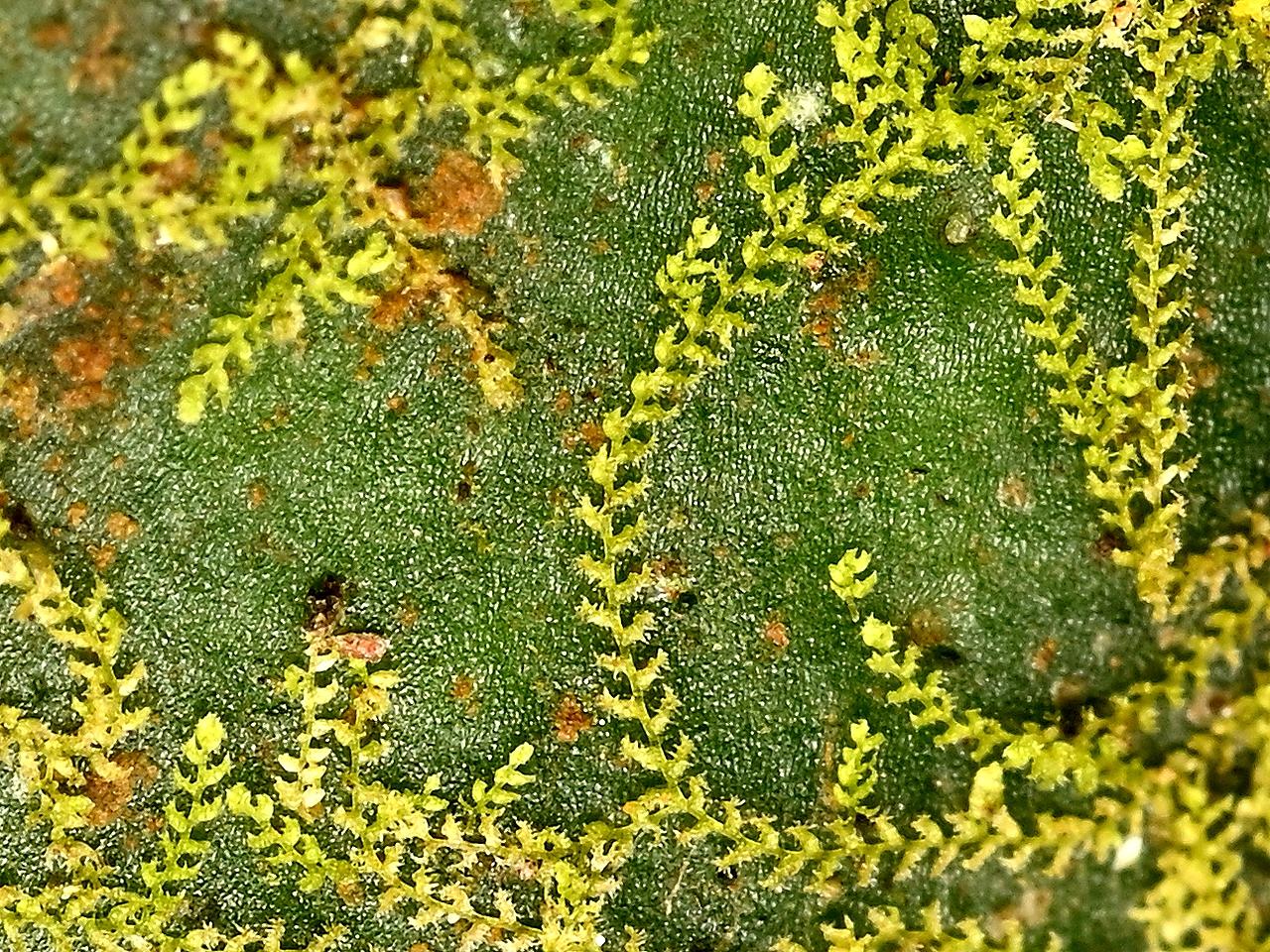
tegatakusarigoke230117_1.jpg from: https://soyokaze2jp.blogspot.com/2023/01/blog-post_23.html
Discovering the Delicate Beauty of Drepanolejeunea Moss
Introduction
Hidden among the lush forests and misty mountains lies a tiny but fascinating plant – the Drepanolejeunea dactylophora var. submuricata Herzog moss
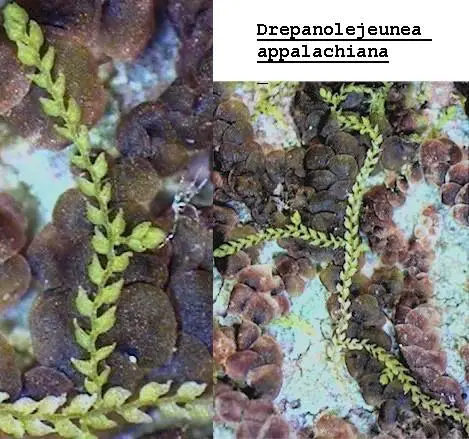
Drepanolejeunea_leaves_lg.jpg from: https://plantasdepuertorico.blogspot.com/2017/02/hepaticas-lobadas-lejeunaceae_55.html
. This diminutive species, belonging to the Lejeuneaceae family, is a true gem in the world of bryophytes. In this blog post, we’ll dive into the captivating details of this moss and uncover its unique characteristics, global distribution, and ecological significance. Get ready to be amazed by the wonders of Drepanolejeunea!
Background
Drepanolejeunea dactylophora var. submuricata Herzog is a type of leafy liverwort, which are non-vascular plants in the division Marchantiophyta
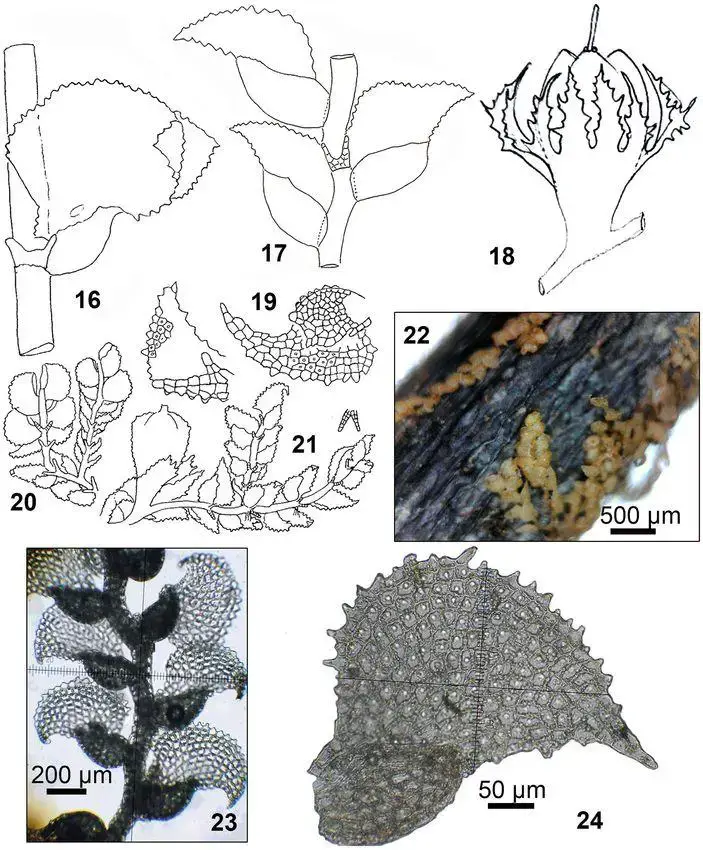
the-african-species-of-drepanolejeunea-vesiculosa-group-6763723-1.jpg from: https://www.readkong.com/page/the-african-species-of-drepanolejeunea-vesiculosa-group-6763723
and class Jungermanniopsida. Liverworts are some of the oldest land plants, with fossils dating back over 400 million years. There are over 7,000 known species of liverworts worldwide, and

drepanolejeunea-ternat-01am.1200×0-u0i1s1q90f1.jpg from: https://www.nzpcn.org.nz/flora/species/drepanolejeunea-ternatensis/
Drepanolejeunea is just one fascinating genus among them.
Morphology and Identification
One of the most striking features of D. dactylophora var. submuricata is its tiny size. The shoots are usually less than 5 mm long, with leaves only 0.2-0.4 mm wide. The leaves are arranged in two rows and have a characteristic sickle or crescent shape, hence the genus name which means “sickle Lejeunea.”
Under a microscope, the leaf cells have a bumpy, almost warty texture, which is a key identifying feature of this variety (submuricata means “somewhat rough”). The underleaves are very small and bifid (split in two). Sporophytes are rarely produced, but when present, they have a round capsule on a short seta.
Global Distribution and Habitat
Drepanolejeunea dactylophora var. submuricata has a scattered distribution across parts of Central and South America, Africa, and Southeast Asia. It typically grows as an epiphyte on tree bark or leaves in humid montane forests, often in association with other bryophytes and lichens.
In the Americas, it has been recorded from countries like Costa Rica, Colombia, Ecuador, and Brazil. African localities include São Tomé and Príncipe, Tanzania, and Madagascar. In Asia, it is known from Indonesia, Malaysia, and Papua New Guinea, among others.
Ecological Roles and Adaptations
Like many bryophytes, Drepanolejeunea plays important roles in forest ecosystems. It helps retain moisture, prevents soil erosion, and provides shelter and food for micro-organisms and invertebrates. Its mat-like growth can also serve as a seedbed for larger plants.
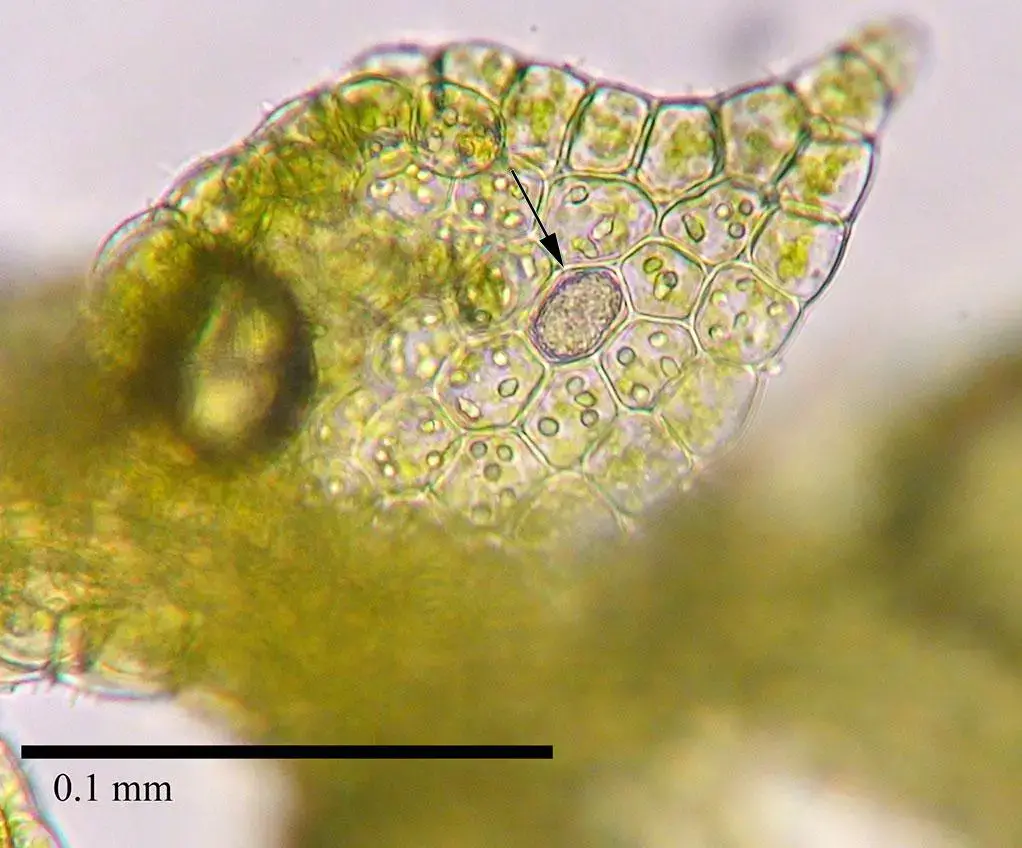
dreapp_pgd7993web2.jpg from: https://www.southernappalachianbryophytes.org/drepanolejeuneaappalachiana.html
To thrive in its epiphytic habitat, D. dactylophora var. submuricata has several adaptations:
- Small size to maintain water balance
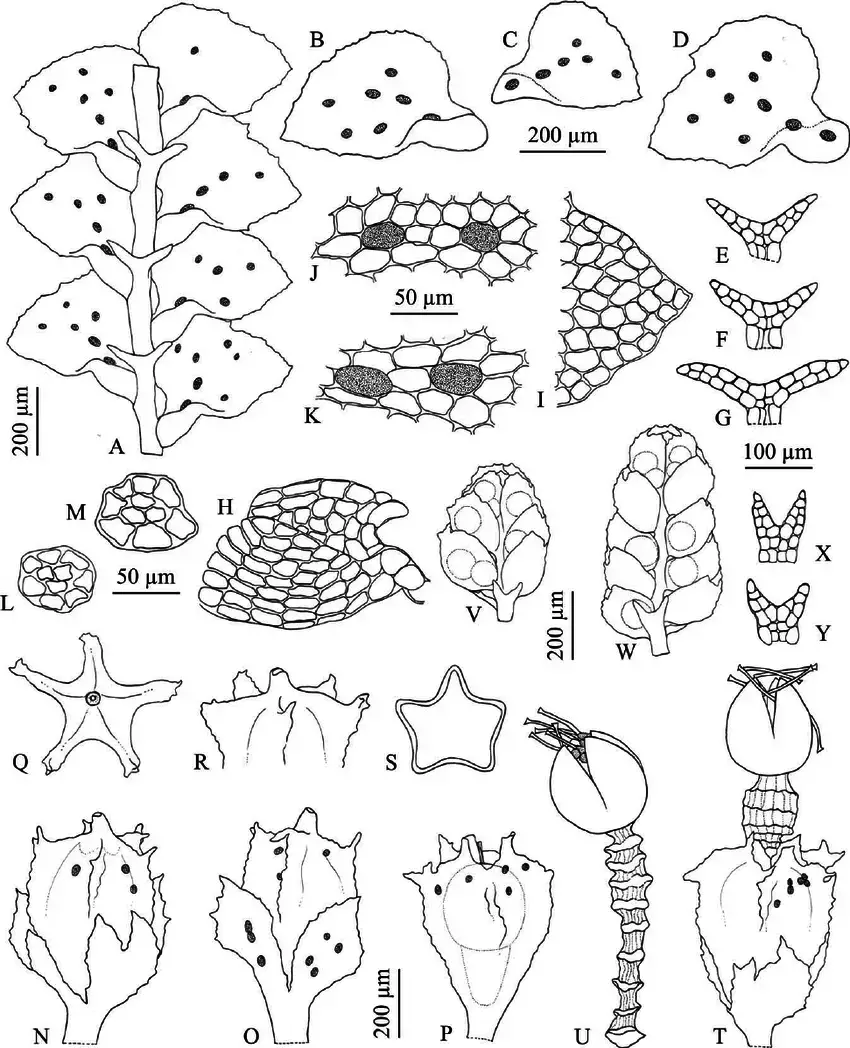
Drepanolejeunea-actinogyna-A-Portion-of-plant-ventral-view-B-D-Lateral-leaves-E-G.png from: https://www.researchgate.net/figure/Drepanolejeunea-actinogyna-A-Portion-of-plant-ventral-view-B-D-Lateral-leaves-E-G_fig1_274102720
- Rhizoids and lobules to adhere to substrates and absorb water/nutrients
- Concave leaves to channel water and trap moisture
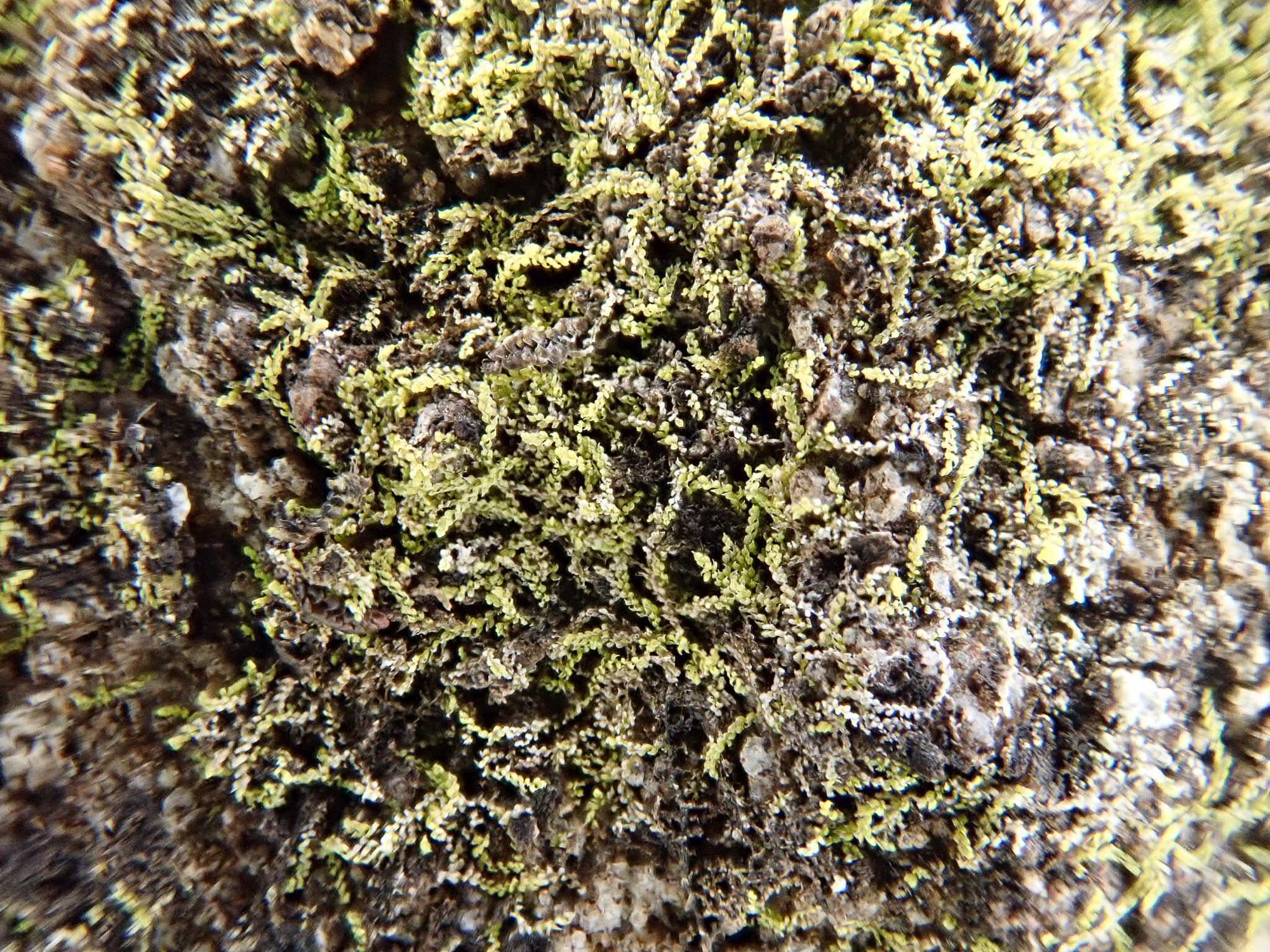
2019-07-07-11-28-40.jpg from: https://www.britishbryologicalsociety.org.uk/learning/species-finder/drepanolejeunea-hamatifolia/
- Asexual reproduction via fragmentation to colonize new areas
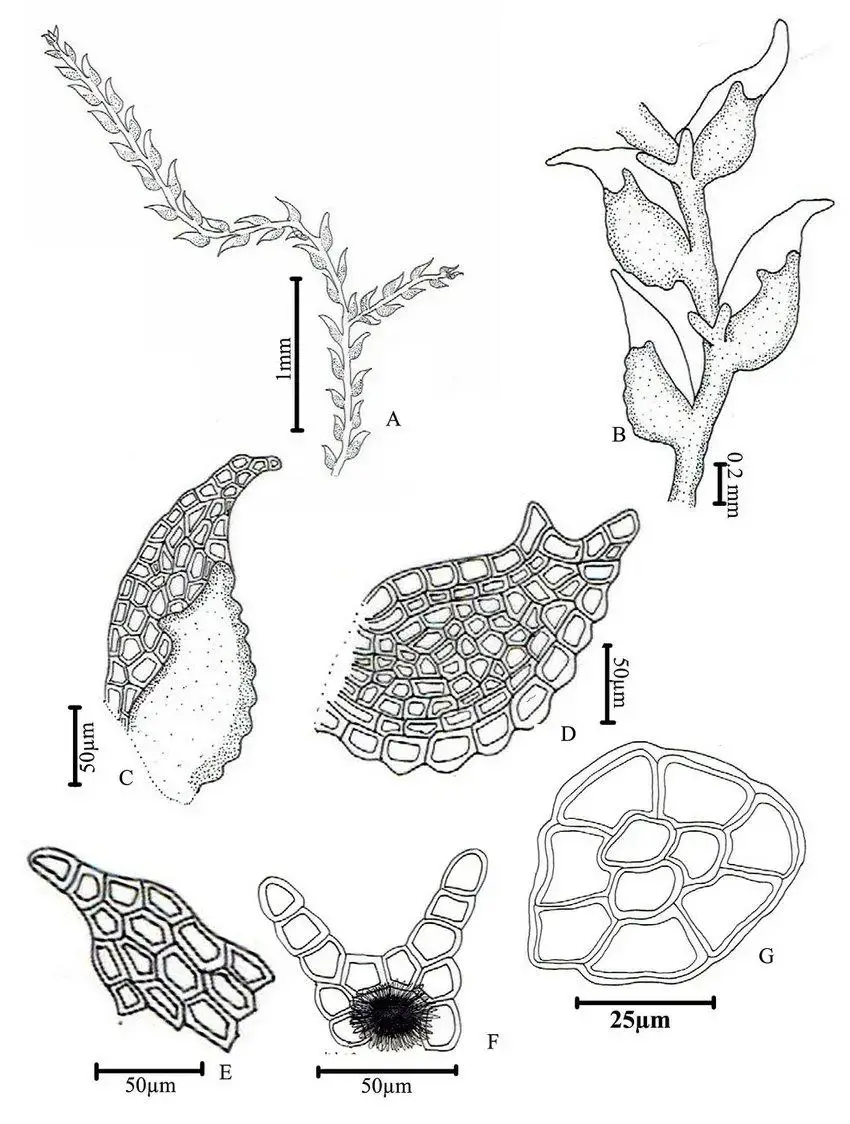
A-G-Drepanolejeunea-angustifolia-Mitt-Grolle-A-portion-of-plant-B-a-portion-of.jpg from: https://www.researchgate.net/figure/A-G-Drepanolejeunea-angustifolia-Mitt-Grolle-A-portion-of-plant-B-a-portion-of_fig2_343694914
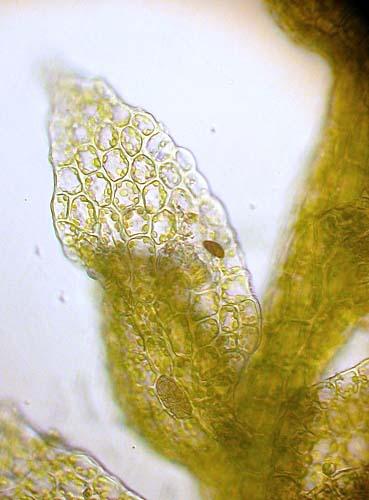
Drepanolejeunea_ocelli.jpg from: https://www.utas.edu.au/dicotkey/dicotkey/Lworts/LEJEUNEACEAE/gDrepanolejeunea.htm
| Characteristic | Description |
|---|---|
| Shoot size | < 5 mm long |
| Leaf size | 0.2-0.4 mm wide |
| Leaf shape | Sickle-shaped or crescent-shaped |
| Leaf texture | Bumpy or warty (submuricata) |
| Underleaves | Very small and bifid |
| Sporophytes | Rarely produced; round capsule on short seta |
Conclusion
From its minute stature to its global distribution,
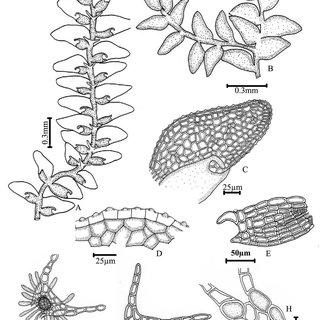
A-H-Drepanolejeunea-erecta-Steph-Mizut-A-plant-ventral-view-B-branch-dorsal_Q320.jpg from: https://www.researchgate.net/figure/A-H-Drepanolejeunea-erecta-Steph-Mizut-A-plant-ventral-view-B-branch-dorsal_fig5_343694914
Drepanolejeunea dactylophora var. submuricata Herzog is a remarkable moss that exemplifies the incredible diversity of bryophytes. Though often overlooked, these tiny plants have much to teach us about adaptation, resilience, and the interconnectedness of life. The next time you’re in a humid forest, take a closer look – you might just spot a patch of Drepanolejeunea weaving its magic on the trees. What other small wonders are waiting to be discovered?